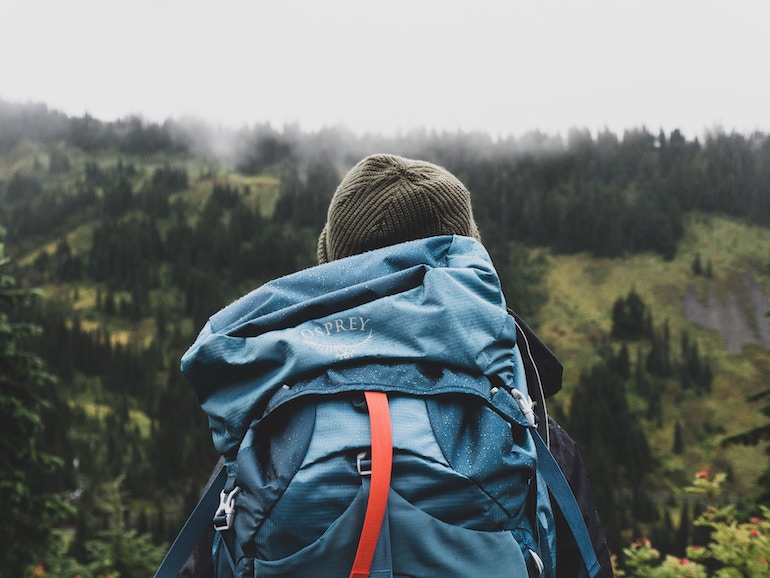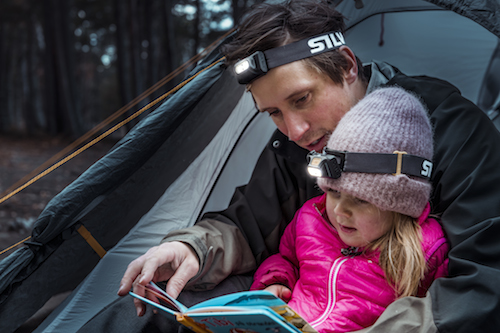What you need to know to start backpacking this spring

Thinking about exploring some of Canada’s most scenic trails this summer on a multi-day hike? Here’s what you need to do to prepare and get out there.
More and more people are looking beyond front country camping and going into the backcountry and on multi-day hikes. Luckily, Canada has an incredible variety of amazing backpacking trails.
But, before venturing out for the first time, it’s key to understand what you’re getting yourself into and to prepare accordingly. And that means both planning and prepping for a trip with the appropriate gear, for example, but also preparing physically.
Training
Build a good aerobic baseObviously it’s not smart nor safe to go from couch-and-Netflix weekends to seven-plus hours spent hiking trails and carrying gear on your back the following weekend, so be sure to build up your aerobic base well ahead of your hike. Running, walking, or hiking three to four times a week for an hour to an hour and a half will help increase your aerobic capacity so you can comfortably hike longer distances over several consecutive days. If you can’t head outside for cardio, hitting the treadmill at an incline or the elliptical trainer at the gym three to four days a week for an hour is fine.
Long day hikesArguably the best way to prepare for a multi-day hike is to hike. About four to five weeks out from your adventure, start spending one day on the weekends on a long day hike with a backpack. Carry some food you plan to eat on your trip, water, and extra weight to help you prepare for what it will be like travelling long distances with weight on your back. Start with a three-hour hike, increasing the time spent on the trails each weekend by about an hour. Depending on the type and distance of multi-day hike you’re doing, you should be able to hike comfortably with a backpack for four to six hours at a time with short breaks ahead of your trip.
Weighted descentsOne aspect of multi-day hiking that you can only truly get training for by actually doing it is navigating steep descents carrying weight on your back, which can be tricky and even dangerous on tired legs – especially when you’re out in the middle of nowhere. Be sure to practice steep descents on your training hikes, or try climbing and descending a set of stairs two steps at a time with a weighted backpack after a short run or walk to prepare your legs for the challenge.
Strength trainingIf you’ll be carrying camping gear and hiking equipment with you on your multi-day hike or the trail you’re tackling is technical in nature, you’ll want to include two to three days a week of strength training as part of your multi-day hike preparing plan. Not only will strength training help prepare you for getting up and over and obstacles you might come across on your hike, but also it will help to prevent potential injuries during training and on the hike itself by strengthening muscle fibres and tendons and reducing muscle imbalances, which can often lead to injury. Be sure to incorporate both upper and lower body exercises into your program, as well as core stability exercises to help you stay stable on the trails.

Backpacking in Jasper National Park (Photo: Leigh McAdam @hikebiketravel)
Trip Planning
Experiencing Canada's vast backcountry wilderness can be a rewarding and thrilling experience. However, regardless of your level of preparedness or wilderness experience, backcountry travel is inherently risky.
Come up with a planBefore leaving on any backcountry excursion, whether it’s a day hike or a multi-day expedition, leave a detailed trip plan with a family member or friend. Your plan should include: departure and return dates, your route and details of any alternative routes or day trips you might take, locations where you intend to camp, the colour of your pack(s) and tent(s), and your vehicle’s colour, make and license plate number. If you do not return on schedule, local and/or park authorities should be notified immediately.
When travelling in one of Canada’s provincial or national parks, your trip plan should also be left at the park ranger/warden’s office. In some of Canada’s National Parks an optional “safety registration” is available (in some parks this is required). If you do not report to park staff at your scheduled return time, a search will be initiated on your behalf. This is recommended for high-risk activities such as mountaineering, climbing, glacier travel, canoeing, kayaking, and backcountry skiing.
Wildnerness know-howAt a minimum, basic knowledge of wilderness survival and first aid is essential for anyone hiking the backcountry. Many organizations offer “in the field” courses where you’ll have the opportunity to test your skills in a true wilderness environment. Both survival and first aid course are highly recommended.
OrienteeringPretty basic stuff here. A good topographic map and a magnetic compass (that you know how to use) are your first line of defense against a long unpleasant night of trying to find your way back to your campsite. A topographic map will enable you to identify key landmarks and a compass will help you establish your direction of travel - both essential if you get lost. A GPS can be helpful if you know how to use it — but always bring a compass and map along as well (batteries can die). Most orienteering clubs offer basic navigation skills clinics — call your local club for information.
Pack extra clothingShifts in weather conditions and temperature can happen quickly in the backcountry - and exposure to the elements can lead to hypothermia (the most common killer of backcountry users). Carry enough extra clothing to layer up should — start to get cold. Ideally, you should have a wicking base layer (to pull moisture away from your skin), an insulating middle layer, and a waterproof outer layer to protect your other layers from the elements. These are called three-layer systems. An extra pair of socks and a hat are also good ideas. Avoid cotton at all costs!
Bring extra food and waterEven on a day hike, always pack at least one extra day’s worth of food and water. A few energy bars, nuts and dried fruit will not significantly impact the weight of your pack, but could provide essential fuel should you have to spend an extra night outside.
First-aid kitA pre-packed, waterproof wilderness first aid kit should be personalized according to your needs and the type of travel/activities you’ll be doing. As with any trip, be sure to carry any of your own required medications (such as inhalers, epi-pen, etc.).
Pocket knifeA good pocket knife can serve a variety of purposes in the backcountry - including gear repair, food preparation, and first aid, to name a few. A Victorinox Swiss Army Knife is a great option. Most have a variety of tools — including a knife, can opener, and scissors. For the tech-savvy, there are new models that even have built-in USB memory sticks, altimeters, and digital clocks.
HeadlampA headlamp or even a flashlight will allow you to signal other campers and travel at night. Take an extra set of batteries and bulbs along for added insurance. Modern LED headlamps are very light and batteries last much longer. For instance, The Silva Scout 3XTH headlamp is a lightweight and all-around headlamp designed for everyday outdoor adventures. It has a red light mode for preserved night vision, a battery level indicator, and a more powerful light output of 350 lumens. Scout 3XTH features Hybrid technology which means that the battery compartment is compatible with both the included rechargeable Silva hybrid battery (1.25 Ah) and standard 3xAAA batteries. We like that this headlamp also offers a combination of a long reach spot light and a close floodlight. This customization of light results in less head movement and a clear view of near as well as far obstacles, and you gain the balance and the confidence it takes to move fast and perform better even when you’re setting up that tent after arriving at the site too late!

Silva Scout 3XTH headlamp is useful around camp in many ways
Matches and candles
A fire can be useful for maintaining warmth and signalling rescuers. Keep waterproof matches (including the striker) and a candle in a waterproof container. Waterproof matches can ignite in windy and wet conditions and a candle will stay lit longer than a match, which can be helpful when trying to light damp firewood. Another alternative is fire paste, which will more easily allow you to start a fire with damp wood.
Emergency blanketFor a few bucks and a couple of ounces in your pack, a Mylar or Kelvalite space blanket can provide warmth and added protection from the elements. It can be used as a windbreak, insulation, or shelter from rain and snow. Space blankets are also available as bivouac sacks (slightly tougher, usually lined with fabric). You might also consider carrying a piece of thin (2-3mm) closed cell foam; it’s lightweight and will add immeasurable warmth during an unplanned overnight stay.
WhistleThe sound of a whistle will carry a lot further than your voice if you get lost and requires much less energy than calling out. Attach it to the outside of your pack or on your clothing so you won’t have to go searching for it in the case of an emergency. Be sure to choose a quality whistle such as a Fox 40.
Water filtration and purificationNo freshwater should be considered safe. A water filter and a purification system (iodine/chlorine) used together will offer great protection. A good system will allow you to stay hydrated with minimal fuss. There are many filters and purification systems available. Visit an experienced outfitter before you head out to establish a convenient and workable system.
GPS tracking device/cell phoneWe never recommend that you rely entirely on technology to keep you safe. That said, carrying an emergency tracker (like SPOT) or a cell phone can provide one more level of security when combined with the skills and other tools outlined above.
Here is a list of our favourite backpacking trails from coast-to-coast. Now, get out there.

 Tweet
Tweet Share
Share